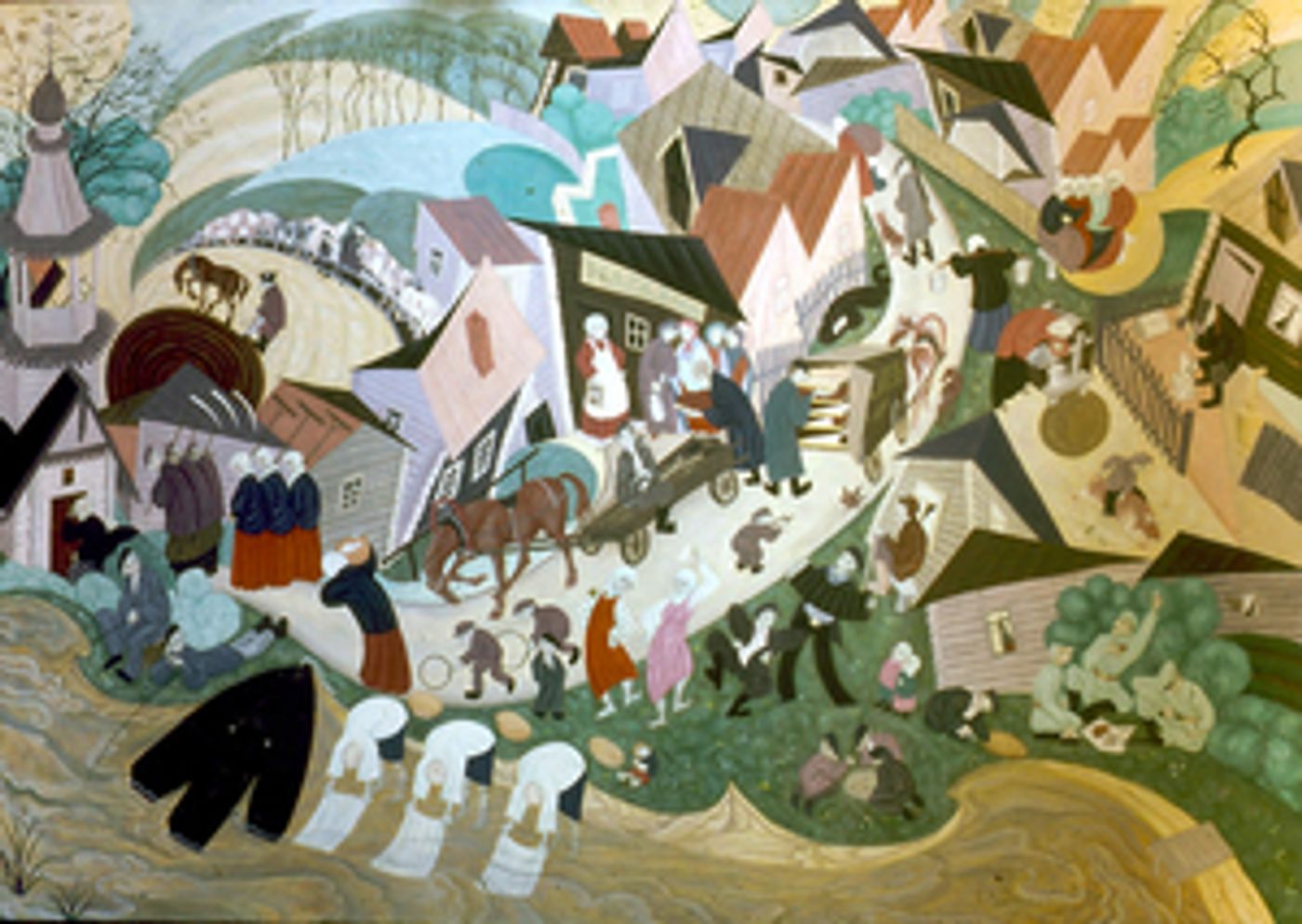'Painted Poetry: Alexander Gassel' Opens at Museum of Russian Icons
The exhibition will be on view through May 23, 2021.

The Museum of Russian Icons plans to reopen on February 5, 2021 with Painted Poetry a retrospective exhibition of contemporary works by Russian-born American artist and designer Alexander Gassel. Blending the avant-garde with traditional Russian iconography, combining ancient symbols with contemporary subjects, Gassel creates extraordinarily vivid paintings that reflect his cultural heritage alongside his life experience in America. The exhibition will be on view through May 23, 2021.
Artist, conservator, and writer Alexander Gassel's work combines ancient icon painting techniques with Biblical, mythological, contemporary, and deeply personal narratives. His distinctive style is a synthesis of Art Deco designs influenced by Erté, narrative genre scenes evoking Chagall, saturated color schemes recalling Kandinsky, and complex formal structures reminiscent of Malevich, all combining to make for a highly sophisticated and individual vision that is unique to Gassel, yet typically Russian. Harmonious, elegant, and moving, his art consistently garners international attention and appears in many public and private collections, including that of the Vatican.
Painted Poetry will be the first exhibition curated by MoRI's new Curator of Collection and Exhibitions, Lana Sloutsky. Bringing together artworks in a wide variety of genres, some paired with excerpts from his short stories, the show reveals Gassel's ability as a master storyteller in both word and image. A poetic aesthetic marks both and simultaneously offers an in-depth look into Gassel's artistic process while stimulating the viewer's imagination.
According to Sloutsky, "Rigorously trained as an iconographer, conservator, painter, and art historian, Sasha is prolific, creative, and erudite. His oeuvre displays an array of themes, styles, and techniques inspired as much by traditional Orthodox iconography as the Italian Renaissance, as much by the Russian avant-garde as by the European post-Impressionists. Not satisfied with the restrictions of a straight edge canvas, Gassel frequently creates unconventionally shaped and colored frames for his paintings, thus extending the works' narrative impact beyond the compositional space. The pieces are characterized by both an acute tension and a harmonious balance of color and line. In all, the works are permeated with an internal sense of rhythm, akin to music on canvas, and are at once introspective and relevant to his widely varied audience. A technical virtuoso with a genuine depth of feeling, his paintings transport the viewer to a different place and time, while reminding him of the universality of the human condition."
ABOUT the ARTIST
Born in Moscow in 1947, Alexander Gassel graduated from the Moscow Institute of Arts and Graphics in 1970 with an MA in Fine Arts.
From 1970 to 1980, he worked at the famous Grabar Center for the Restoration and Preservation of Art in Moscow, restoring and copying medieval tempera paintings while collecting and assessing icons that were, at that time, being removed from churches across Russia and brought to Moscow for conservation and display.
Influenced by this experience, the artist began to create his own paintings - for the most part, personal interpretations of Biblical events. His painting style derives as much from icon painting as from early 20th-century Russian masters such as Marc Chagall, Wassily Kandinsky, and Kazimir Malevich, and émigré artists such as Erté. During the Soviet period, Art Nouveau, Art Deco, and other artistic movements were suppressed and Gassel has vividly described the experience of surreptitiously seeing works by Chagall and Malevich in the storage areas of Soviet museums.
Gassel immigrated to the United States in 1980 with $10 in his pocket and no knowledge of the English language. He was not allowed to bring any of his artwork because, by law, no religious art could leave the country. He found work as a draughtsman for a railroad company and painted on weekends. Eventually, he had an exhibition where he sold enough paintings to quit his job and work as an artist and icon conservator full-time again. Gassel is the longtime icon conservator at the Museum of Russian Icons, a position to which he brings a wealth of experience, an eye for detail, and an exemplary work ethic.
In his work, Gassel uses ancient techniques employed in the creation of icon paintings. He paints with egg yolk tempera, making his own color pigments by grinding natural stones and minerals, such as malachite, cinnabar, or lapis into powder, which he then mixes with egg yolk. The artist often applies gold or silver leaf to the paintings.
More information about Gassel can be found at alexandergassel.com.
Videos
